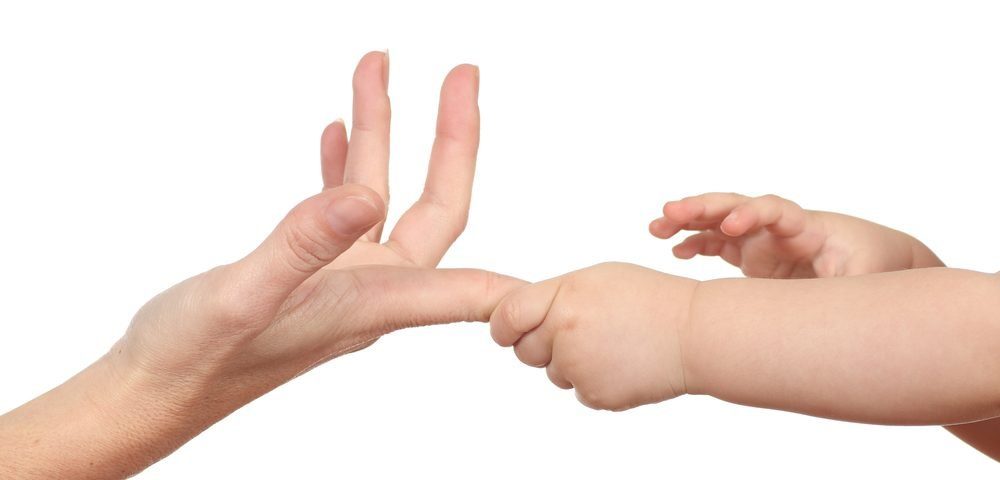Mom Writes of Family and Doctor ‘Partnership’ That Led to Baby’s Spinraza Treatment

A family’s journey through the diagnosis and treatment of their baby girl, born with spinal muscular atrophy type 1 (SMA1), was the focus of a paper written by her mother and the doctors, highlighting the importance of cooperation between parents and clinicians in caring for children with SMA.
Ultimately, that journey led to the girl becoming the first SMA patient in Israel treated with Spinraza (nusinersen) in early 2017.
The article, “Choosing Life with Spinal Muscular Atrophy Type 1,” was published as a commentary in Advances in Therapy.
SMA type 1 is the most severe form of SMA. Untreated, it is typically fatal in infancy. Before the recent approval of therapies, palliative care was generally the only treatment available to children diagnosed with this disease.
Hodaya Nisnkorn’s third daughter, Daria, was born in mid-2016. When she was 2 months old, Daria’s parents and grandparents noticed the baby was having difficulty breastfeeding, moving her arms, and turning her head. She was diagnosed with SMA type 1 when she was 5 months old.
At the time, there were no approved treatments, which raised difficult questions about how best to care for the infant.
“My husband and I were facing the most horrible decision parents ever have to make: should we doom our daughter to a life without movement, a prisoner in her own body, not able to breathe or eat without machines and not use her voice to communicate with others, or should we let her go and not take any invasive measures to prolong her life,” Nisnkorn wrote.
“What guided us [through] this struggle was the decision that Daria had a right to live, to be happy and not suffer,” she added. “We choose her happiness as our guidance.”
Daria’s parents worked with her doctors to figure out the best plan they could to care for the baby.
“I had long conversations with Daria’s parents about her prognosis and about the measures that can be taken to support her breathing. … Our talks were profoundly emotional for me,” wrote Moran Lavie, MD, a pediatric pulmonologist (lung specialist) at Dana-Dwek Children’s Hospital, Tel-Aviv Sourasky Medical Center.
“I felt that the doctors saw Daria for the sweet baby that she is and not just as an ‘SMA patient,'” Nisnkorn wrote. “They did not merely understand our struggle, they were a part of it, committed to making the journey together with our family.”
Despite the cooperation of everyone involved, the best care that could be offered to Daria was fundamentally limited, because there was nothing at the time to treat SMA.
Then, at the end of 2016, Spinraza became the first SMA treatment to gain approval from the U.S. Food and Drug Administration (FDA). Clinical trial data showed the therapy improved motor function and survival in people with multiple types of SMA, including type 1.
“There was now a treatment for Daria’s disease,” Lavie wrote. “I could not have been happier.”
But it was not yet approved in Israel. Daria’s medical team reached out to Biogen, Spinraza’s developer, to help Daria get access to this treatment. However, bureaucracy was holding up the process — and Nisnkorn didn’t want to wait.
“We knew that, with every day that passed, Daria was growing weaker and her condition more threatening,” she wrote.
“With the encouragement and support of her doctors, and the help of many friends all over the world, we approached the manufacturers of the drug and their representatives in Israel. Endless calls, emails and even personally approaching the CEO of the company eventually bore fruit!” Nisnkorn wrote. “The company decided to provide compassionate treatment to our little girl here in Israel.”
Daria became the first person with SMA in Israel to be given Spinraza in January 2017 — only weeks after its U.S. approval — when she was 8 months old.
“Despite treatment, Daria is dependent upon noninvasive ventilation and is fed through a gastrostomy tube, but she is able to move her extremities, to sit with support, and to babble, to the delight of each and every one of us,” her mother added.
As of the paper’s publication, Daria is 3 years old and has just undergone her 11th cycle of Spinraza treatment. Her mother describes her as “a beautiful, happy little girl with an infectious smile.”
Both mother and doctor agree that the partnership between Daria’s parents and medical caregivers was “the driving force that made all the difference.”







